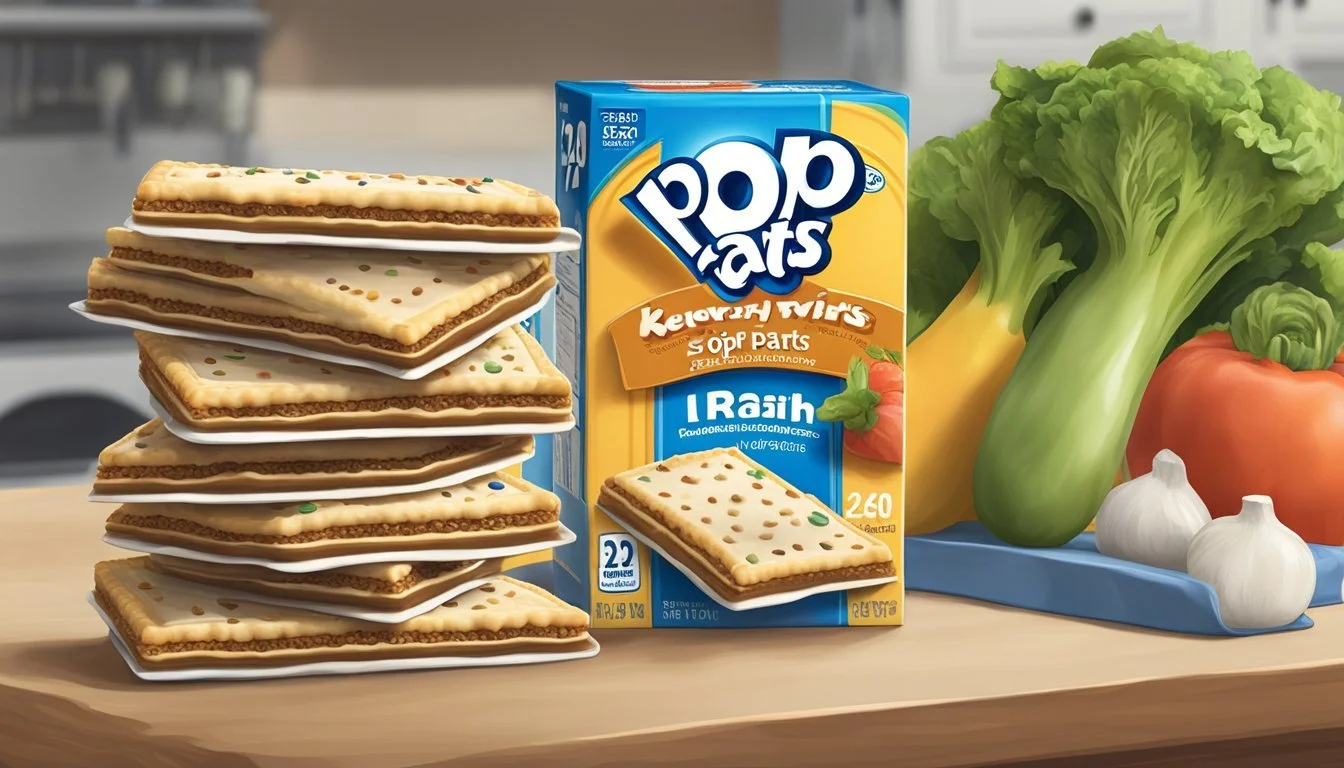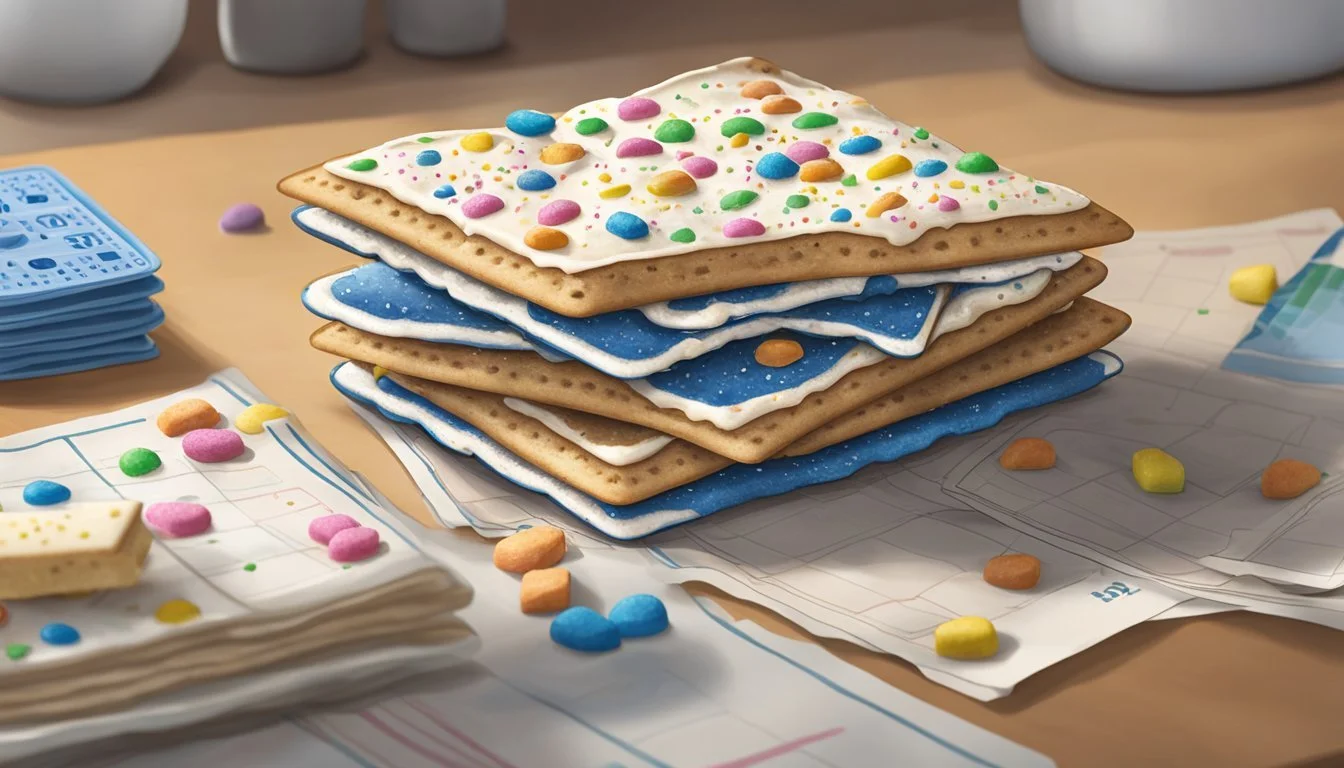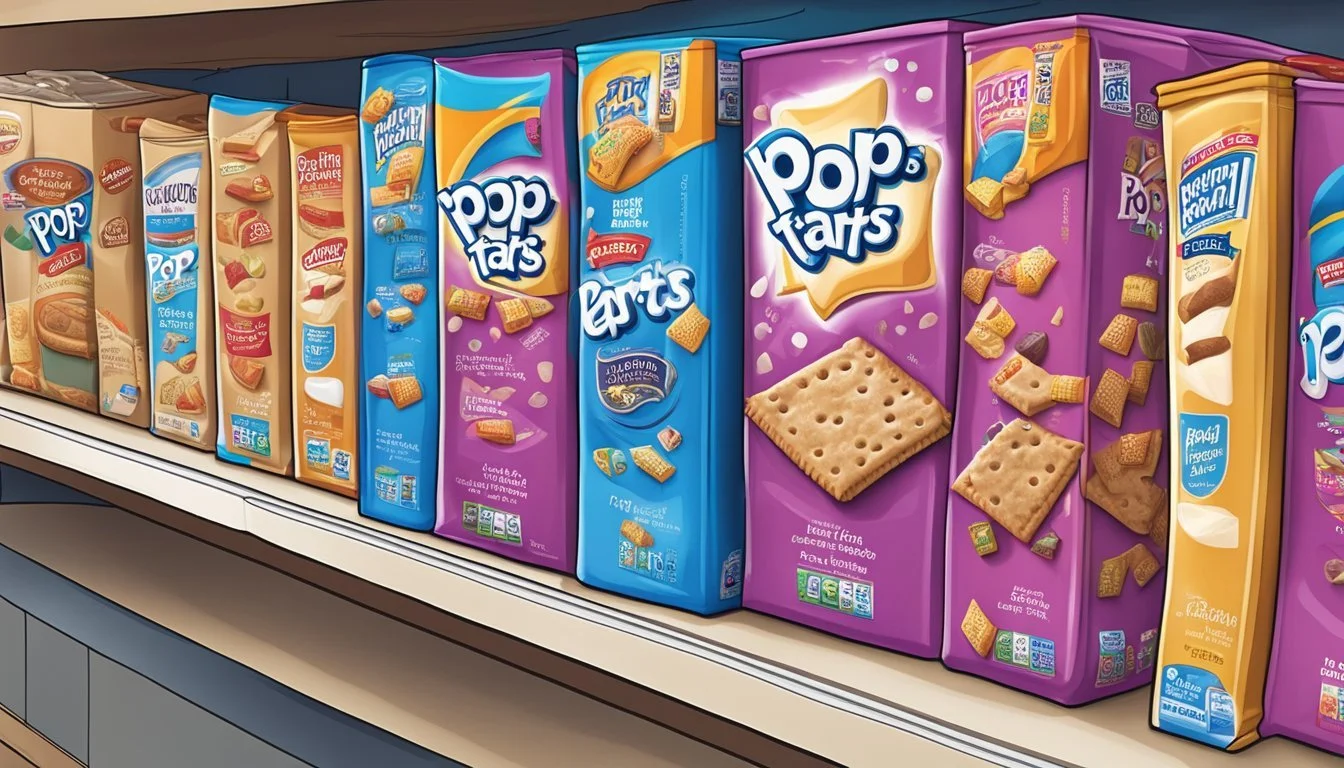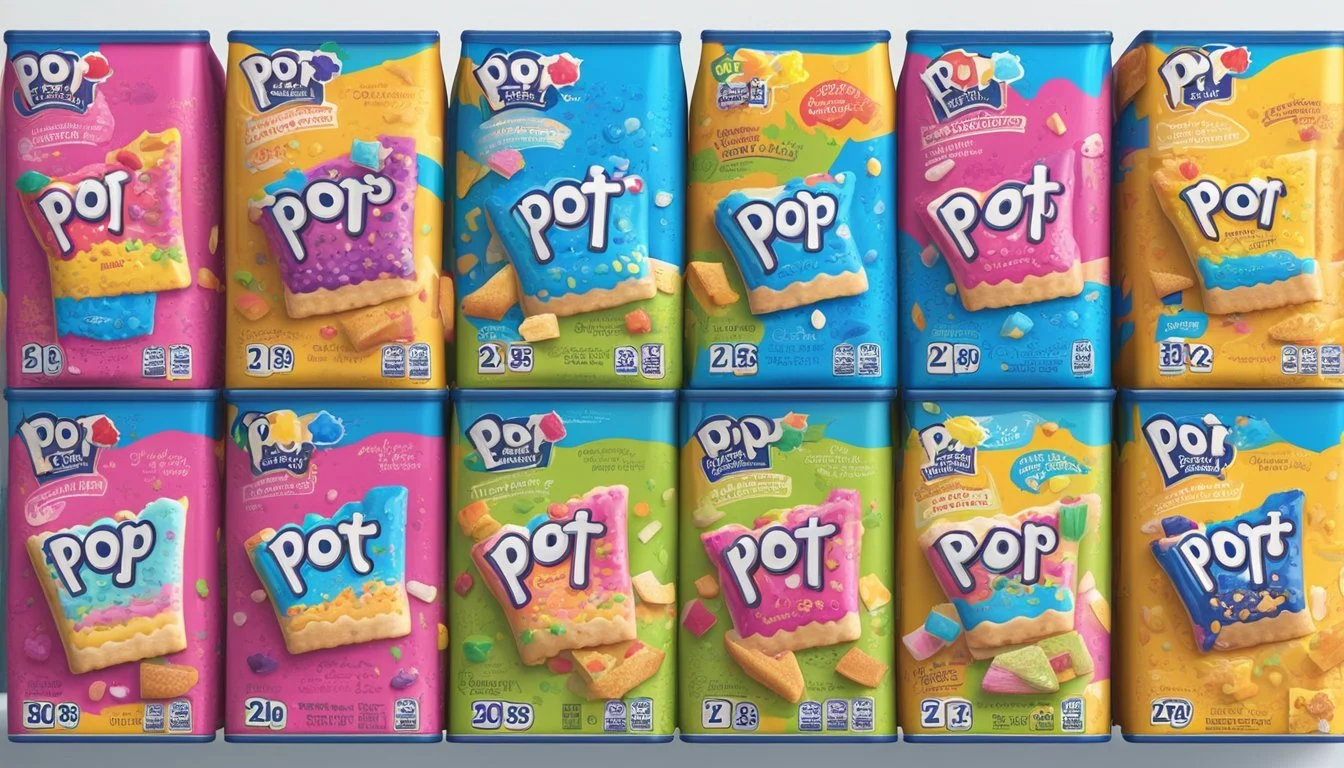Do Pop-Tarts Expire?
Understanding Shelf Life and Storage Tips
When it comes to long-lasting snacks, Pop-Tarts often come to mind. These popular toaster pastries are not only convenient but also boast an impressive shelf life. Yes, Pop-Tarts do have an expiration date, but it serves more as a guideline rather than a strict cutoff. Properly sealed, an unopened package of Pop-Tarts can remain good for several months beyond the best-by date.
Food safety is always a concern with any packaged food. Although Pop-Tarts can stay safe to eat long after their expiration date, noticeable quality changes like texture and taste may occur. For opened packets, resealing them in an air-tight container can extend their freshness for about one to two weeks.
To truly enjoy each bite of your Pop-Tarts, knowing proper storage methods is essential. Keeping them in a cool, dry place can prolong their shelf life, ensuring they remain both tasty and safe to consume.
Understanding Expiration and Shelf Life
Consumers often wonder how long their favorite snacks remain safe and tasty to eat. Pop-Tarts, like many packaged foods, have specific guidelines regarding their expiration and shelf life.
What Does the Expiration Date Mean?
The expiration date on a package of Pop-Tarts indicates the point after which the manufacturer no longer guarantees the product's optimal quality. This date is not a strict deadline, meaning the product may still be safe to eat beyond this point.
However, the taste and texture may start to decline. The "best before" or "best by" date is particularly important as it primarily serves to inform consumers when the Pop-Tarts will be at their peak flavor and freshness.
Determining Shelf Life of Pop-Tarts
The shelf life of Pop-Tarts depends on various factors, including whether the package is opened or unopened. Unopened packages typically last 6-12 months past the best-by date, retaining their quality.
Once opened, Pop-Tarts should be consumed within 1-2 weeks for the best experience. The foil packaging helps preserve their freshness, but exposure to air can cause them to dry out and lose quality more rapidly. Proper storage in a cool and dry place can extend their usable life.
Ensuring Pop-Tarts are sealed tightly after opening is crucial to maintain their quality and enjoy them at their best.
Storage Solutions for Optimal Freshness
To ensure Pop-Tarts maintain their quality and taste, proper storage is crucial. Key considerations include the storage location and packaging integrity.
Unopened Packets: From Pantry to Fridge
Unopened Pop-Tarts are best stored in a dry place like a pantry. Foil wrapping seals each packet, protecting it from moisture and air. Keeping Pop-Tarts in a cool and dry place ensures they remain fresh for up to 12 months.
For longer storage, consider moving them to the refrigerator. The lower temperature helps preserve their texture and flavor. This is particularly useful in humid climates where pantry conditions might not be ideal.
Once Opened: How to Keep Pop-Tarts Fresh
After opening a packet, it's essential to maintain freshness. Transfer any uneaten Pop-Tarts to an airtight container. This prevents exposure to air, which can cause staleness.
Stored in a cool and dry place, opened Pop-Tarts remain good for up to 1-2 weeks. If you live in a humid area, storing them in the refrigerator inside an airtight container is a smart choice to extend their shelf life.
Signs of Spoilage in Pop-Tarts
Identifying spoiling Pop-Tarts involves checking for visual signs, changes in aroma, texture degradation, and alterations in taste. These indicators ensure the pastries are consumed at their peak quality and safety.
Visual and Aroma Markers
Visual inspection is the first step. Mold growth can appear on the pastries, signaling spoilage. Mold may present as fuzzy spots in various colors, including green, white, or black. Discoloration is another indicator, where the pastry or filling changes from its original hue.
Aroma is equally important. Fresh Pop-Tarts have a sweet, inviting smell. If a Pop-Tart smells sour, musty, or off, it's likely spoiled. A strong, unpleasant odor is a clear sign that the product should not be consumed.
Textural Changes and Taste Degradation
Texture changes can also indicate spoilage. Fresh Pop-Tarts have a semi-firm crust and a soft interior. Over time, they may become excessively hard or overly dry, which suggests they are past their prime.
Taste is another telling factor. Taste degradation occurs when flavors dull or become unpleasant. A fresh Pop-Tart has vibrant, sweet, and sometimes fruity flavors. If these flavors are lackluster or stale, it’s a sign of spoilage. Always reject pastries with an unusual or unpleasant taste to avoid potential health risks.
The Impacts of Temperature on Pop-Tarts
Temperature plays a significant role in the preservation and quality maintenance of Pop-Tarts. Different storage temperatures can either prolong their shelf life or accelerate spoilage.
The Role of the Freezer
Storing Pop-Tarts in the freezer can extend their shelf life considerably.
When frozen, the low temperatures help prevent the growth of mold and bacteria. This can keep the Pop-Tarts edible well past their best before date.
However, it's important to place them in an airtight container to avoid freezer burn, which can adversely affect the taste and texture. Frozen Pop-Tarts may need to be toasted or microwaved to achieve the desired crispiness and flavor before consumption.
Avoiding High Temperatures and Direct Sunlight
High temperatures and direct sunlight can cause Pop-Tarts to spoil more quickly.
Constant exposure to heat may result in the filling melting, leading to an unpleasant texture and potential packaging breaches.
Additionally, the pastries might become stale faster, losing their characteristic crispiness. It is advisable to store Pop-Tarts at room temperature in a cool, dry place, shielded from any direct sunlight or heat sources. This practice helps maintain their quality and taste.
Refrigeration: Is It Necessary?
Refrigeration for Pop-Tarts is generally unnecessary and might even be counterproductive.
The moisture present in a refrigerator can lead to sogginess, compromising the pastry’s texture.
While refrigeration is not harmful, it does not significantly benefit their longevity when compared to storing them at room temperature in proper conditions. If choosing this method, ensure they are well-sealed to minimize moisture exposure.
Preventing Food Waste and Ensuring Safety
To ensure the safety and quality of Pop-Tarts while minimizing potential food waste, it's essential to understand proper handling methods and recognize when to discard products based on safety and quality considerations.
Proper Handling and Safety Precautions
Proper storage extends the edible lifespan of Pop-Tarts. Keeping them in a cool, dry area, ideally in their original foil packaging, maintains freshness and prevents contamination. If opened, use airtight containers to avoid moisture absorption, which can degrade quality.
Always check for unusual odors, discoloration, or mold. These are indicators of spoilage. While Pop-Tarts have a long shelf life, mishandling can pose health risks, including food poisoning. Follow "Best Before" dates to enjoy optimal taste and safety.
When to Discard: Safety vs. Quality Compromise
Pop-Tarts remain edible past their "Best Before" date but might suffer quality degradation. If the pastry appears stale or has a changed texture, it might still be safe but less enjoyable.
For safety, discard if any signs of mildew or off smells are detected. While the risk of severe health issues is low with dry products like Pop-Tarts, consuming compromised food can lead to digestive discomfort or potential health risks. Prioritize safety over quality to avoid any health complications.
Alternative Uses for Pop-Tarts Past Peak Quality
Pop-Tarts past their optimal taste can still be used in creative and delicious ways. Rather than discarding them, try incorporating them into various recipes and culinary experiments.
Creative Culinary Ideas
Caramel Popcorn Recipe: Stale Pop-Tarts can be crumbled and mixed with popcorn to create a caramel popcorn recipe with unique flavors. To prepare, melt caramel, toss it with popcorn and crumbled Pop-Tarts, and let it set.
Dessert Toppings: Break stale Pop-Tarts into small pieces and use them as toppings for ice cream, yogurt, or parfaits. Their sweet flavor can enhance a variety of desserts.
Milkshakes: Blend broken Pop-Tart pieces with ice cream and milk to create a thick, flavorful milkshake. Different Pop-Tart flavors can offer a range of delicious twists to the classic treat.
Homemade Recipes Incorporating Stale Pop-Tarts
Pop-Tart Bread Pudding: Create a rich bread pudding using cubed stale Pop-Tarts. Combine them with a mixture of eggs, milk, and sugar. Bake until golden for a sweet, comforting dessert.
Energy Bars: Mix crumbled Pop-Tarts with oats, honey, and nuts to make homemade energy bars. Press the mixture into a pan, refrigerate until firm, then cut into bars for a convenient snack.
Pie Crusts: Crush stale Pop-Tarts and use them as a base for pie crusts. Mix the crumbs with melted butter, press into a pie pan, and bake. This crust adds an extra layer of sweetness and flavor to your pies.
By repurposing Pop-Tarts that have passed their prime, you can enjoy unique, homemade recipes that are both innovative and delicious.
Understanding Food Labels and Manufacturing Dates
Food labels provide essential information about the product's "Best By" date and manufacturing details. These labels help consumers determine freshness and safety.
Interpreting "Best By" and Manufacturing Labels
The "Best By" date is often found on food packaging and indicates when the product will be at its peak quality. This date doesn't necessarily mean the food is unsafe to eat after it passes, but there may be noticeable changes in taste, texture, or nutritional value.
Manufacturing dates show when the product was made. These can help consumers calculate the freshness of the item. Some products might also feature a "Best-Before Date," which offers guidance on when the product is expected to retain its optimal quality.
The Difference Between "Best By" and Safety Guidelines
"Best By" dates focus on quality, not safety. Consuming a product past this date may lead to a decline in taste, but it usually remains safe to eat, depending on storage conditions. Safety guidelines, in contrast, address the product's potential to cause harm if consumed after a certain period.
Pop-Tarts, for instance, are often safe to consume months after their "Best By" date if they have been stored properly in sealed packaging. It's crucial to inspect the packaging for any visible signs of spoilage before consumption to avoid health risks.
Specific Pop-Tart Varieties and Their Shelf Lives
Different varieties of Pop-Tarts come with distinct shelf lives based on their ingredients, preservatives, and flavors. Understanding these differences is crucial for making informed decisions about storage and consumption.
Frosted vs. Unfrosted: Does It Matter?
Pop-Tarts come in both frosted and unfrosted varieties. The presence of frosting can slightly influence the shelf-life due to the additional ingredients.
Frosted Pop-Tarts: These include options like Brown Sugar Cinnamon, Strawberry, and S’mores. Sealed in foil packaging, they typically last between 6 to 12 months. The extra layer of frosting can provide an additional barrier against moisture, preserving them a bit longer.
Unfrosted Pop-Tarts: Varieties such as unfrosted Strawberry or Blueberry tend to have a slightly shorter shelf life, ranging from 6 to 10 months. The absence of frosting means there's less protection against the elements, affecting their longevity somewhat.
Limited Edition and Seasonal Flavors
Limited edition and seasonal flavors of Pop-Tarts, such as special holiday versions, have unique ingredients that impact their shelf life.
Ingredients and Preservatives: These limited and seasonal varieties often contain different flavorings and preservatives to achieve their unique taste profiles. While the base shelf life might be around 6 to 12 months, it's important to check the specifics on the packaging.
Flavor Variations: For instance, a special holiday flavor might include additional extracts or toppings that can shorten or extend its shelf life. Consumers need to store them as per guidelines to maximize their preservation.
By paying attention to the type of Pop-Tart, consumers can enjoy their preferred flavor within its optimal time frame.
Pro Tips for Pop-Tart Storage and Consumption
Proper storage and preparation of Pop-Tarts can significantly enhance their flavor, texture, and overall eating experience. This section covers how to store Pop-Tarts to maximize their freshness and how to prepare them for optimal enjoyment.
Maximizing Taste and Texture Through Storage
Pop-Tarts should be stored in a cool, dry place to maintain their texture and flavor. Proper storage includes keeping them in their original foil wrapping and box.
For unopened Pop-Tarts, they can last 6-12 months past the "best by" date if stored correctly. Once opened, it's best to consume Pop-Tarts within 1-2 weeks to avoid them becoming stale, crumbly, or losing aroma.
Sealing: Ensure that partially used packages are tightly resealed to prevent exposure to air and moisture.
Extreme Temperatures: Avoid storing in places subject to high heat or humidity, as it can affect the oil content and taste.
Appearance: If they look sour, discolored, or oily, they might not be as enjoyable.
Heating and Serving Recommendations
Prepare Pop-Tarts to enhance their flavor and texture by heating them correctly. The best methods include using a toaster, microwave, or the oven.
Toaster: Place Pop-Tart in the toaster on a low setting. Heat for about one minute or until edges are lightly browned.
Microwave: Place on a microwave-safe plate and heat for 3 seconds. Additional time may make them too soft or ruin the flavor.
Be cautious as the filling might be hot and can lead to burns. Allow Pop-Tart to cool for a few seconds after heating.
They may be enjoyed plain, but adding a topping like a dollop of whipped cream or a scoop of ice cream can elevate the experience. For frozen Pop-Tarts, use the defrost setting in the microwave before heating to ensure they are evenly reheated.
Using these tips, the Pop-Tart eating experience will be delightful, maintaining flavor, texture, and a pleasing appearance.











